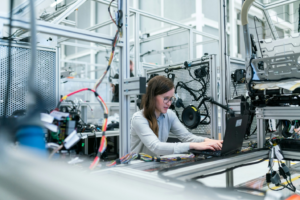Our voices are as unique as fingerprints, and voice identification technology is leveraging this individuality for everything from unlocking smartphones to securing bank accounts. But with any new technology comes a cloud of uncertainty. Let’s debunk some of the most common misconceptions about voice identification and shed light on how it truly works.
Myth #1: Voice Identification Can Be Easily Fooled
Movies often portray criminals crafting elaborate voice impressions to bypass security systems. In reality, voice identification goes beyond simply matching the sound of your voice. Modern systems analyze over 100 unique characteristics, including pitch, tone, inflection, and even the subtle nuances created by the shape of your vocal cords. Replicating all these factors is incredibly difficult, making voice identification a robust security measure.
Myth #2: Voice Identification is Inaccurate
While no technology is perfect, voice identification boasts impressive accuracy rates. Studies by the National Institute of Standards and Technology (NIST) consistently report error rates below 1%, meaning the system correctly identifies the speaker over 99% of the time. Additionally, voice identification systems often work in conjunction with other authentication methods like PINs or facial recognition, further enhancing security.
Myth #3: Your Voice is Stored Unsafely
Security is paramount when it comes to voice data. Reputable voice identification systems don’t store a direct copy of your voice. Instead, they create a mathematical representation, often called a “voiceprint,” that’s unique to you. This voiceprint is securely encrypted and compared to your voice sample during authentication. Even in the unlikely event of a data breach, hackers wouldn’t be able to recreate your voice from the stored data.
The Role of Digital Forensics in Voice Identification
The accuracy and reliability of voice identification evidence can be crucial in legal proceedings. Digital forensic consultants with expertise in forensic audio analysis can play a vital role. They can extract, analyze, and authenticate voice recordings, ensuring their integrity in court. Techniques like forensic video analysis can be used if the voice evidence is part of a video recording.
When to Consider Voice Identification
Voice identification offers a convenient and secure way to access our devices and accounts. However, it’s important to choose a reputable system with a strong track record of data security. Businesses that handle sensitive information might benefit from consulting with a data forensic expert to assess their voice identification needs and ensure they have robust security protocols in place.

Unlocking the Future of Voice Authentication with Eclipse Forensics
Voice identification technology is rapidly evolving, offering a glimpse into a future where our voices become our digital keys. Here at Eclipse Forensics, we stay at the forefront of technological advancements. We are a certified firm in forensic audio, forensic video, mobile device forensics, and data forensic services, equipped to navigate the complexities of digital evidence, including voice data.
If you have questions or misconceptions about voice identification or require digital forensic services, contact Eclipse Forensics today. Let us help you unlock the secure potential of your voice.

